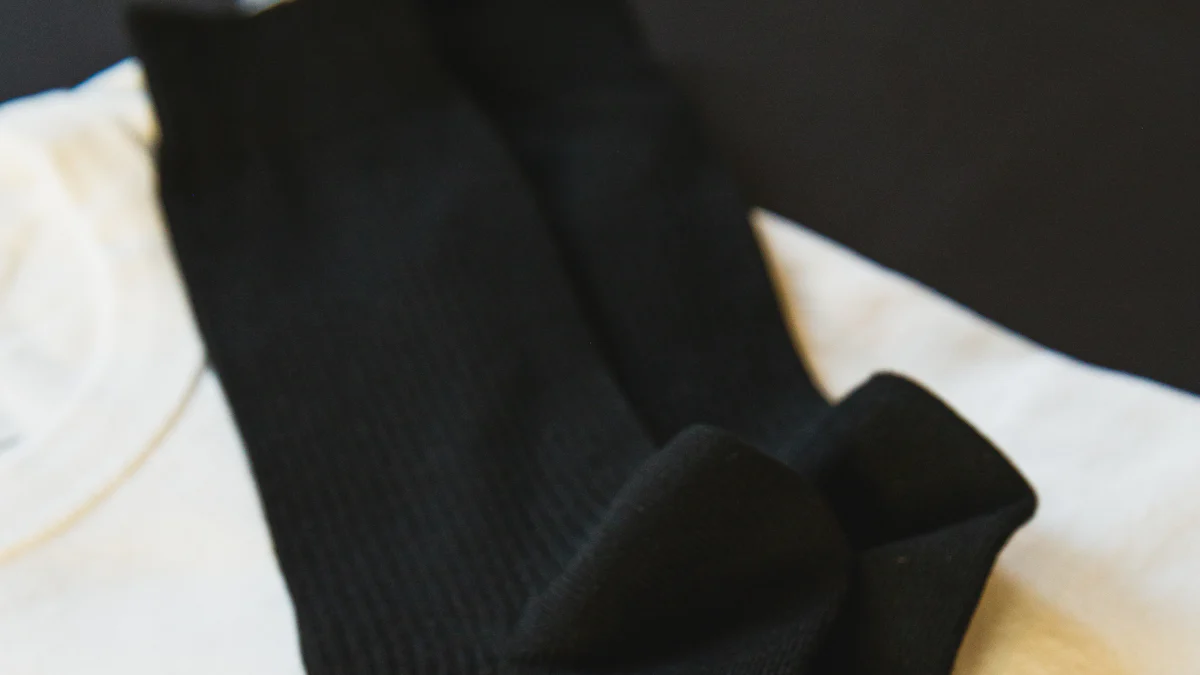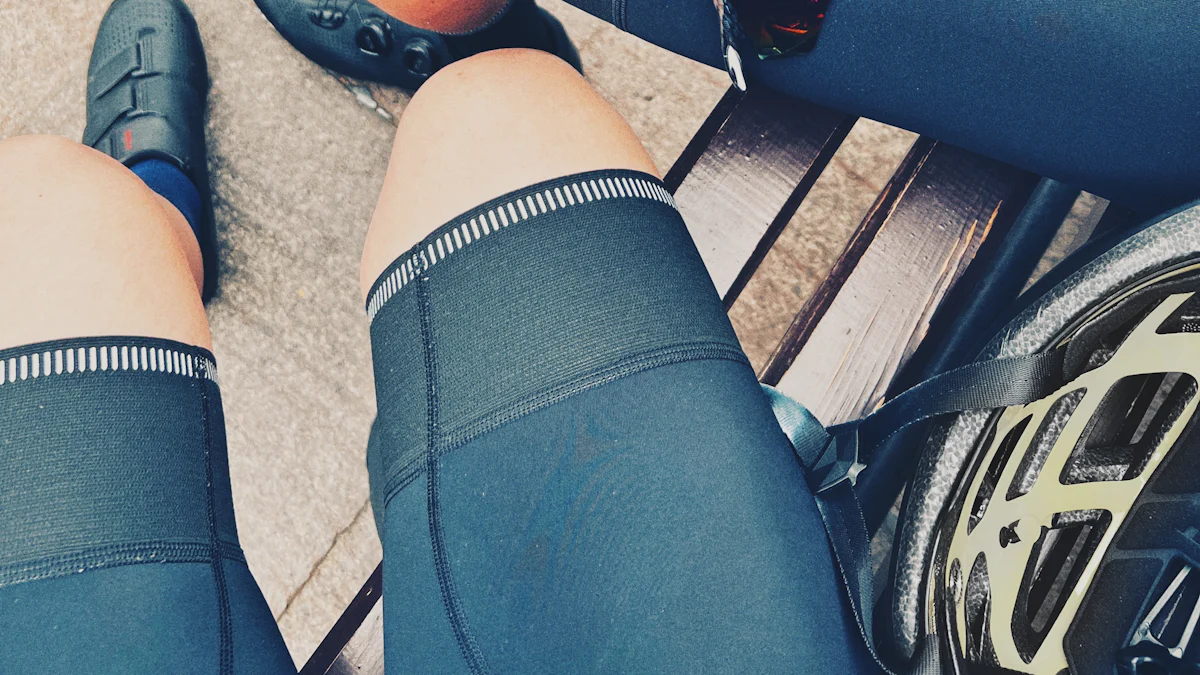
Wearing men’s pressure socks holds significant importance for maintaining leg health. These socks can improve blood flow, reduce swelling, and provide support to muscles and veins. Studies show that compression socks can alleviate symptoms of poor peripheral circulation, leg tingling, and restless leg syndrome. Factors influencing the choice of pressure socks include material, compression level, and intended use. Proper selection ensures maximum benefits and comfort.
Understanding Men’s Pressure Socks
What Are Men’s Pressure Socks?
Definition and Purpose
Men’s pressure socks, also known as compression socks, apply gentle, consistent pressure to the legs and feet. This pressure helps improve blood flow, reduce swelling, and support muscles and veins. These socks use graduated compression, meaning the pressure is strongest at the ankle and gradually decreases up the leg. This design promotes better blood circulation and prevents blood from pooling in the lower extremities.
How They Work
Compression socks work by squeezing the legs and feet. This pressure decreases the amount of blood in the deeper leg veins and increases the speed of blood flow. The socks prevent blood build-up and reverse blood flow. Graduated compression socks get tighter at the feet and ankles while loosening at the top. This helps prevent blood from pooling in the feet and promotes improved circulation.
Benefits of Wearing Men’s Pressure Socks
Improved Circulation
Wearing men’s pressure socks boosts peripheral circulation. The therapeutic pressure applied to the lower legs improves blood flow. This can offer relief to muscles after effort or a long day spent on the feet. Compression socks help blood flow more efficiently to the muscles in the lower legs, improving the delivery of oxygen and nutrients.
Reduced Swelling and Fatigue
Compression socks help prevent fluid buildup in the legs. People with previous injuries in the lower extremities, diabetes, or venous insufficiency often experience consistent swelling throughout the day. Compression socks reduce this swelling and minimize pain and fatigue. The socks also support the muscles and joints during exercise, reducing muscle soreness and fatigue.
Prevention of Varicose Veins
Varicose veins and spider veins result from weakened or damaged vein valves. Compression socks manage and prevent these conditions by promoting blood flow and reducing the pooling of blood in the veins. Athletes use compression socks to improve exercise performance and endurance, reduce muscle soreness, and decrease recovery time after tough workouts or injuries.
Types of Men’s Pressure Socks

Compression Levels
Mild compression (8-15 mmHg)
Mild compression socks provide gentle pressure. These socks suit individuals who stand or sit for extended periods. Mild compression helps alleviate minor swelling and discomfort. Office workers and travelers often benefit from this level.
Moderate compression (15-20 mmHg)
Moderate compression offers a higher level of support. Athletes and frequent flyers often choose this level. Moderate compression socks help with daily wear and sports activities. These socks also aid in preventing minor varicose veins.
Firm compression (20-30 mmHg)
Firm compression socks deliver substantial support. Medical professionals recommend this level for managing moderate varicose veins and edema. Firm compression helps in post-surgical recovery. Athletes use firm compression for enhanced performance and quicker recovery.
Extra-firm compression (30-40 mmHg)
Extra-firm compression provides the highest level of support. Doctors prescribe this level for severe medical conditions. Extra-firm compression socks manage severe varicose veins and chronic venous insufficiency. Patients with lymphedema also benefit from extra-firm compression.
Length and Style
Knee-high
Knee-high men’s pressure socks cover the calf and end just below the knee. These socks suit individuals needing targeted compression for the lower legs. Knee-high socks are popular among athletes and travelers. This style helps reduce swelling and improve circulation in the lower legs.
Thigh-high
Thigh-high men’s pressure socks extend up to the thigh. These socks provide comprehensive support for the entire leg. Thigh-high socks benefit individuals with extensive varicose veins. This style also suits those recovering from surgery or managing severe swelling.
Pantyhose
Pantyhose-style men’s pressure socks offer full-leg coverage. These socks combine the benefits of knee-high and thigh-high styles. Pantyhose provide uniform compression from the feet to the waist. Individuals with widespread circulation issues or severe varicose veins often choose pantyhose.
Sleeves
Compression sleeves cover the calf without including the foot. Athletes frequently use sleeves for targeted muscle support. Sleeves help reduce muscle fatigue and enhance performance. This style allows for flexibility and comfort during physical activities.
Factors to Consider When Choosing Men’s Pressure Socks

Material and Fabric
Breathability
Breathable materials ensure comfort during extended wear. Fabrics like cotton and nylon allow air circulation. This prevents excessive sweating and keeps the skin dry. Proper ventilation reduces the risk of fungal infections.
Durability
Durable fabrics extend the lifespan of pressure socks. Materials like spandex and polyester offer strength and elasticity. High-quality socks withstand frequent washing and daily use. Durability ensures consistent compression over time.
Moisture-wicking properties
Moisture-wicking fabrics draw sweat away from the skin. This keeps the feet dry and comfortable. Materials like merino wool and synthetic blends excel in moisture management. Dry feet reduce the likelihood of blisters and odors.
Fit and Sizing
Measuring your legs
Accurate measurements ensure a proper fit. Use a tape measure to determine the circumference of the ankle, calf, and thigh. Measure the length from the heel to the knee or thigh. Proper measurements prevent discomfort and ensure effective compression.
Ensuring a proper fit
A snug fit maximizes the benefits of pressure socks. The socks should feel tight but not restrictive. Avoid wrinkles or folds in the fabric. Ensure the top band lies flat and does not roll down. A well-fitted sock enhances circulation and reduces swelling.
Specific Use Cases
For athletes
Athletes benefit from compression socks during and after exercise. The socks improve blood flow and reduce muscle fatigue. Studies show that compression socks enhance performance and speed up recovery. Athletes often choose moderate to firm compression levels.
For travel
Travelers use pressure socks to prevent deep vein thrombosis (DVT). Long flights or car rides increase the risk of blood clots. Compression socks improve circulation and reduce leg swelling. Mild to moderate compression levels suit most travelers.
For medical conditions
Medical conditions like varicose veins and lymphedema require specific compression levels. Doctors often recommend firm to extra-firm compression for severe cases. Compression socks manage symptoms and prevent complications. Consult a healthcare professional for personalized advice.
Practical Tips for Choosing the Best Men’s Pressure Socks
Consulting with a Healthcare Professional
Importance of professional advice
Consulting a healthcare professional ensures the selection of appropriate pressure socks. Medical experts understand individual health needs. They can recommend the correct compression level. This prevents potential complications from improper use.
Personalized recommendations
Healthcare professionals provide personalized recommendations. They consider specific conditions like varicose veins or lymphedema. Personalized advice helps in choosing the right material and fit. This enhances comfort and effectiveness.
Trying Different Brands and Styles
Finding the right fit
Trying different brands helps in finding the perfect fit. Each brand offers unique designs and sizes. Experimenting with various options ensures comfort. A well-fitted sock improves circulation and reduces swelling.
Comparing features and benefits
Comparing features and benefits of different brands is essential. Some socks offer moisture-wicking properties. Others focus on durability and breathability. Evaluating these aspects helps in making an informed choice.
Reading Reviews and Testimonials
Learning from others’ experiences
Reading reviews and testimonials provides valuable insights. Users share their experiences with different products. This helps in understanding the pros and cons. For example, Shoji Samson praised a particular brand for its comfort and support.
“These socks have truly been a game-changer in my daily routine. Unlike other compression socks and sleeves I’ve tried, which often proved uncomfortable, rolled down by the end of the day, or failed to provide adequate support, these socks excel in both comfort and functionality.” – Shoji Samson
Identifying common issues and solutions
Reviews help in identifying common issues and solutions. Users often mention problems like socks rolling down or inadequate support. Understanding these issues aids in avoiding similar pitfalls. This ensures a better purchasing decision.
Choosing the right men’s pressure socks can significantly improve leg health. Proper selection enhances blood flow, reduces swelling, and supports muscles and veins. Consider factors like material, compression level, and intended use to make an informed choice.
“Compression socks help improve blood flow, reduce swelling, and provide support to muscles and veins.”
Wearing the correct pressure socks offers numerous benefits. Make an informed decision to enjoy improved circulation, reduced fatigue, and better overall leg health.
See Also
Discovering the Range of Socks for Males and Females

